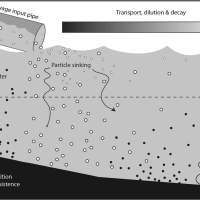Case Studies in Water-rich and Urban Areas
Welcome to an enlightening exploration of the complex dynamics of water-rich and urban areas. In a world grappling with climate change, rapid urbanization, and evolving ecological landscapes, understanding these unique regions becomes indispensable. Often, professionals dealing with these issues find themselves thinking, "It's better for you to buy dissertation chapter" as they seek to communicate complex ideas. Our journey takes us deep into the heart of these zones where water isn't just a resource but forms the lifeblood of the metropolitan fabric.
In the sections that follow, we delve into the rich tapestry of water-abundant regions and the distinctive traits of city landscapes. Moreover, we will examine their vital interconnectedness. Join us as we traverse the landscapes of cities that have beautifully harmonized the complex demands of urban existence and water resource management. In this exploration, we'll reveal the obstacles they encountered, the groundbreaking methods they employed, and the consequential influence on the ecosystem and its inhabitants.
Whether you're passionate about preserving water, fascinated by the field of city planning, or merely captivated by the connection between us and this precious resource, this investigation beckons. Together, let's embark on this captivating journey through water and urban life, gaining knowledge, adapting, and pioneering for a more sustainable future. If you're pressed for time, consider the option to buy dissertation abstract online for a concise overview of the intricate topics covered in this exploration.
Understanding Water-rich and Urban Areas
As we delve into the topic of managing water resources in urban contexts, it's essential to first understand the key concepts that form the core of our discussion - water-rich areas and urban areas. These environments, each unique in their characteristics, interact in complex ways that influence the strategies cities adopt to manage their water resources effectively.
What are Water-rich Areas?
Water-rich regions are, quite intuitively, teeming with water resources. Their characteristic features include numerous bodies of water like lakes, rivers, and wetlands, coupled with substantial yearly rainfall. Some of these areas naturally manifest over time due to geographic and climatic conditions, while others are a result of strategic human interventions for effective water management.
The wealth of these water-rich areas extends beyond just the physical presence of the resource. It encapsulates the rich biodiversity and thriving ecosystems that these regions support. They are often teeming with diverse plant and animal life, contributing significantly to local and global ecological balances. From the lush, thriving deltas of the Mississippi to the vast, mesmerizing expanse of the Great Lakes region, such areas present a unique intersection of aquatic availability, ecological variety, and human interaction. Studying them provides valuable insights into the delicate balance between water availability and sustainability, contributing significantly to our understanding of sustainable aquatic resource management.
Characteristics of Urban Areas
Contrastingly, urban spaces are recognized by their dense population and extensive human-made structures, starkly different from the areas surrounding them. Dominated by infrastructure like roads, buildings, and utilities, city spaces present a unique set of economic, social, and environmental complexities. Challenges like high energy demands, waste management, and resource allocation are part and parcel of metropolitan life.
Despite this, urban areas are vibrant hubs of innovation, growth, and cultural diversity. With effective management, they can embody sustainability, as seen in modern cities adopting green infrastructure, efficient public transportation, and sustainable housing. These urban zones provide a unique perspective for studying human-environment interactions.
Understanding both water-rich and urban areas provides a comprehensive platform from which to delve into our case studies. These areas, though seemingly different, often overlap in real-world scenarios. The intersection of these environments forms the basis for our exploration into managing water resources in urban contexts. By dissecting their characteristics, we lay a solid foundation for understanding the triumphs and challenges that our featured cities have experienced.
To learn about the impact of water quality on human health, visit EduEkerLab's page for comprehensive information.
Importance of Studying Water-rich and Urban Areas
In an era where sustainable living is not just a lifestyle choice but an absolute necessity, studying the symbiosis between water-rich and urban areas is critical. These two unique yet interdependent ecosystems are fundamental in shaping our future cities and the way we manage our most precious resource: water.
Firstly, understanding water-rich areas can provide invaluable insights into effective aquatic resource management. It can lead us to innovative strategies for water conservation, quality improvement, and biodiversity protection. The lessons gleaned can serve as models for other regions grappling with water scarcity or pollution.
Studying urban areas illuminates the realities of urbanization, shedding light on the challenges that swift city development imposes, especially concerning resource distribution and environmental impact. It also underscores the commendable adaptability and innovativeness of cities in overcoming these hurdles.
Merging the study of water-abundant areas and urban spaces allows for a holistic view of city aquatic management. This amalgamation enables us to balance the requirements of burgeoning metropolitan populations while preserving our precious water resources. This understanding serves as a pivotal backdrop for our case studies, illuminating the initiatives of the selected cities and their future implications.
Case Study 1: Managing Water Resources in a Water-rich Urban Area
Our first case study invites us on a journey to the heart of Europe, to a city that is as famous for its iconic canal system as it is for its masterful water management - Amsterdam. Often referred to as the "Venice of the North", Amsterdam’s extensive network of canals, waterways, and locks reveals an extraordinary example of urban adaptability to a water-rich environment.
-
Background
Amsterdam, nestled in the Netherlands, presents a fascinating backdrop for our case study. The city, known for its intricate canal system and charming architecture, is essentially below sea level and frequented by high rainfall. These conditions have required the city to effectively manage its water resources to support a bustling urban population. The efficient management of aquatic resources in Amsterdam, despite its unique geographical challenges, serves as a hallmark of water-rich metropolitan areas. Amsterdam’s strategy offers a compelling narrative of how urbanization can harmoniously coexist with abundant water resources.
-
Challenges Faced
Despite its reputation for efficient aquatic management, Amsterdam's water wealth does not come without its share of challenges. The city constantly contends with regular flooding due to excessive rainfall and high groundwater levels. The maintenance and preservation of the water quality in its extensive canal system is a considerable task. Moreover, limiting water waste and accommodating the city's growing population without straining the existing aquatic resources present ongoing issues for the city's water management authorities. These challenges underscore the complexity of managing aquatic resources in an urban setting.
-
Solutions Implemented
In the face of these challenges, Amsterdam has showcased commendable resilience and innovation. The city has implemented an advanced urban water management system that elegantly balances modern technology with age-old practices. This includes a meticulous canal cleaning schedule, state-of-the-art sewage treatment plants, and an effective flood management system that uses the city’s unique canal system. A standout initiative is their rainwater collection and storage system, designed to relieve pressure on the sewage system during heavy rains and significantly reduce the risk of flooding. These solutions represent a holistic and sustainable approach to urban water management.
-
Results and Impact
Amsterdam’s efforts have yielded significant results, transforming potential water crises into opportunities for urban growth and environmental sustainability. Today, the city enjoys a well-managed system that guarantees a high-quality water supply for its residents and minimal flood risks despite its unique geographical challenges. Amsterdam's story serves as an inspiring precedent for other water-rich city areas around the world. It demonstrates that by effectively managing their unique aquatic resources, cities can not only sustain their populations but also enhance the overall quality of life. This case underscores the transformative potential of proactive and innovative water management in addressing urbanization challenges.
Case Study 2: Sustainable Urban Planning in a Water-rich City
As we continue our exploration of the interaction between urban spaces and water, we now turn to an iconic city that epitomizes the harmony of city life with water - Venice, Italy. Known for its elaborate canal system and impressive urban planning, this city offers a unique perspective on sustainability, adaptation, and resilience in a water-rich environment.
-
Overview of the City
Venice, our second case study location, is the epitome of urban adaptability and creativity. Known as the 'City of Canals', it is a masterpiece of sustainable urban planning, an urban environment built entirely on water. Nestled in the northeastern part of Italy, this timeless city is an architectural marvel, intertwining history, culture, and water in every corner. The city's intricate canal network and the famous gondolas offer an exquisite image of life intertwined with water. Venice's unique blend of water-rich existence and metropolitan development paints a remarkable picture of sustainable city living, making it an ideal case study for our exploration.
-
Urban Planning Challenges
Venice's beauty and uniqueness come with its own set of urban planning challenges. Rising sea levels and regular flooding, infamously referred to as 'aqua alta,' pose significant threats to the city's structural integrity and its historical infrastructure. This situation is further complicated by the city's geographical location and its vulnerability to climate change. In addition, maintaining the quality and navigability of its extensive waterways for daily transport and tourism activities is a constant task for the city's administrative machinery. The constant wear and tear due to water movement and high tourist traffic calls for regular maintenance and strategic urban planning.
-
Sustainable Solutions
In response to these challenges, Venice has not just survived, but it has charted a path that many cities can learn from. The city's innovative urban planning initiatives offer a roadmap for sustainable living in water-rich environments. Venice implemented the MOSE project, a system of mobile gates designed to shield the city from extreme tides, showcasing its engineering prowess. Furthermore, it has pursued sustainable tourism strategies to lessen the environmental impact and preserve the city's cultural heritage. Striking a balance between its historical significance and contemporary demands, the city has prioritized maintaining the quality of its waterways and preserving its unique marine ecosystem, showcasing its commitment to sustainability.
-
Positive Outcomes
Through these strategic initiatives, Venice has successfully navigated its unique challenges. The MOSE project has reduced the frequency of damaging floods, and sustainable tourism is helping to preserve the city's unique charm for future generations. This case is a testament to the effectiveness of sustainable urban planning in a water-rich city. It underscores the importance of innovation and forward-thinking in preserving the balance between city development and maintaining ecological health in water-rich urban areas. As we further delve into water and urban studies, Venice's efforts provide a robust blueprint for managing and preserving water resources in similar urban contexts.
Journey's End: Unveiling the Secrets of Water-wise Cities for a Sustainable Future
Our journey through Amsterdam, Venice, and Cape Town offers enlightening insights into the dynamic world of water-rich and urban areas. These cities, each with its unique challenges and innovative solutions, illustrate the compelling interplay between urbanization and water management. As we strive toward a future marked by sustainability and resilience, these case studies serve as powerful guides. They emphasize the necessity of proactively managing aquatic resources, employing sustainable urban planning, and fostering community involvement. Understanding and embracing these lessons are vital steps towards creating water-wise cities capable of thriving amidst the challenges of the 21st century and beyond. Join us for future explorations as we continue to delve deeper into water and air quality topics.







